| US news | 2004 indoor |
| |
||||||||||||||||||||||||||||||||||
|
||||||||||||||||||||||||||||||||||
|
National Track and Field Hall of Fame opened January 2004 at the New York Armory |
 |
Donna on the Side Special Edition on the Hall of Fame Grand Opening of Hall of Fame
|
|||||||||||||||||
Al Oerter
|
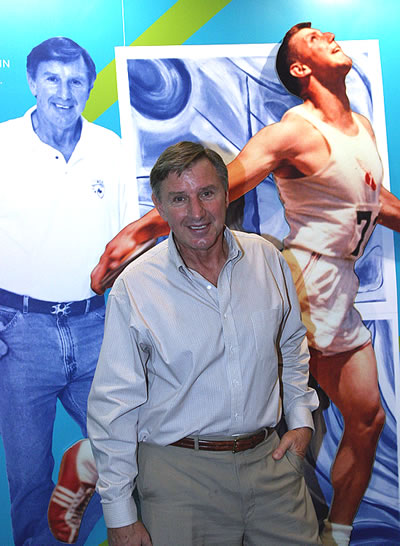 |
 |
|
The people who made it happen
from left, Craig Masback, chief executive officer of USATF; Allan Steinfeld, president of the New York Road Racing Club and race director of the New York Marathon; Michael Frankfurt, chairman of the board of The Armory Foundation; and Dr. Norbert W. Sander Jr., president of The Armory Foundation.
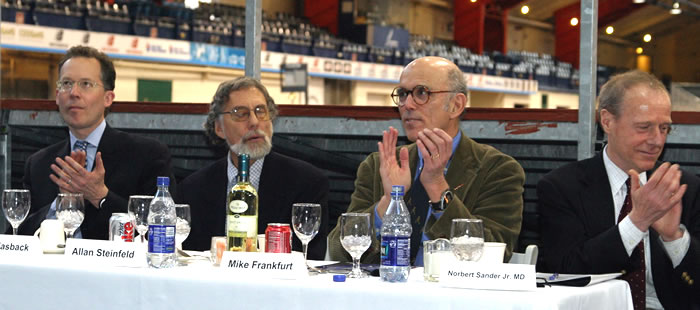
Dr. Sander, the chief architect of the revival of the Armory as a track and field center, said that more races had been run at the Armory than any other place in the world. He recalled that in the Armory's previous life the great Finnish distance runner Paavo Nurmi, winner of 9 Olympic gold medals in the 1920s, ran at the Armory in front of 8,000 people. "I am a physician, and I check people's health every day. I find that the pulse of the sport is good," concluded Sander, himself the winner of the New York Marathon in 1974.
Masback said, "This is an exciting day, the realization of a vision. This is the most vibrant place for track and field in the world."
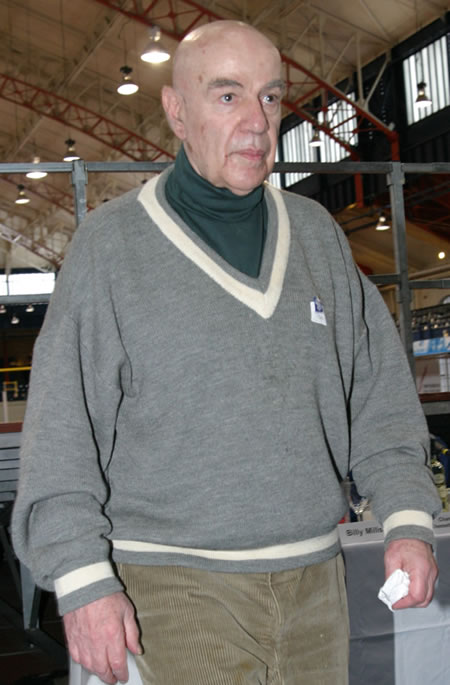 |
Bud Greenspan The great Olympic film maker produced a film for the Hall of Fame. |
Mural in the Auditorium -- Legendary Villanova coach Jumbo Jim Elliott congratulates Marty Liquori
after Liquori beat Jim Ryun at Franklin Field in Philadelphia
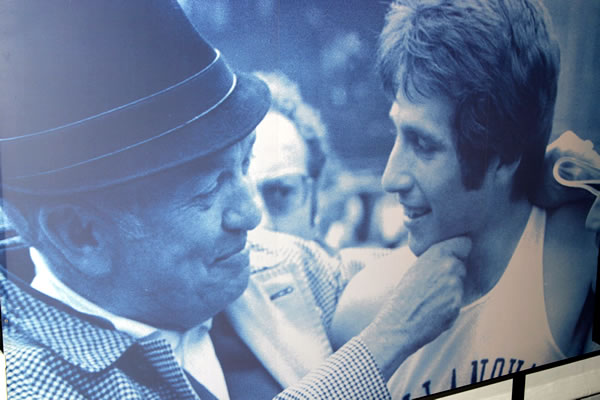
 |
Walk the New York Marathon
|
| Alberto Salazar -- One of those featured in the marathon room was present for the Hall of Fame opening day as a coach. His prize pupil, Oregon high schooler Galen Rupp, ran in the elite men's 2 mile race. Rupp could look in the marathon room to see how his coach did it when he won the New York Marathon three straight times and the Boston Marathon in 1982. | ||
 |
 |
 |
1982 New York - Salazar (left) outsprinted Rodolfo Gomez in the last quarter mile. |
1982 Boston - Salazar had the last surge in a see saw race to beat Dick Beardsley by 2 seconds. |
1980 New York - Salazar and women's winner Grete Waitz were given laurel wreaths. |
Looking Back at the Armory and Its Thrills, Chills and Vibrations
Marc Bloom recalls the Armory of his youth
"When at 16 I entered the Armory Track and Field Center to run my first high school meet in the winter of 1963, this is what I found: a cavernous arena with a painted line on a splintered, wooden floor that served as the track, thunderous noise from spectators pounding the balcony guardrail, and opponents who were bigger and faster than I was and walked around as if they owned the place. And they did.
"It was the scariest moment of my youth.
"But it would turn out to be the most liberating as well, for the Armory, which has played host to track meets for
a century in northern Manhattan, is where I found my passion for running, and for life."
Full article appeared in the New York Times Jan 18, 2004.
[Marc Bloom, editor of The Harrier, is one of the most decorated track writers in the country. He has published many books, including the DyeStat-Harrier Books pair, Parents Guide to High School Track and Cross Country and Training Guide to High School Track and Cross Country.]
DyeStat �1998-2004 |
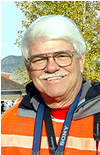 |